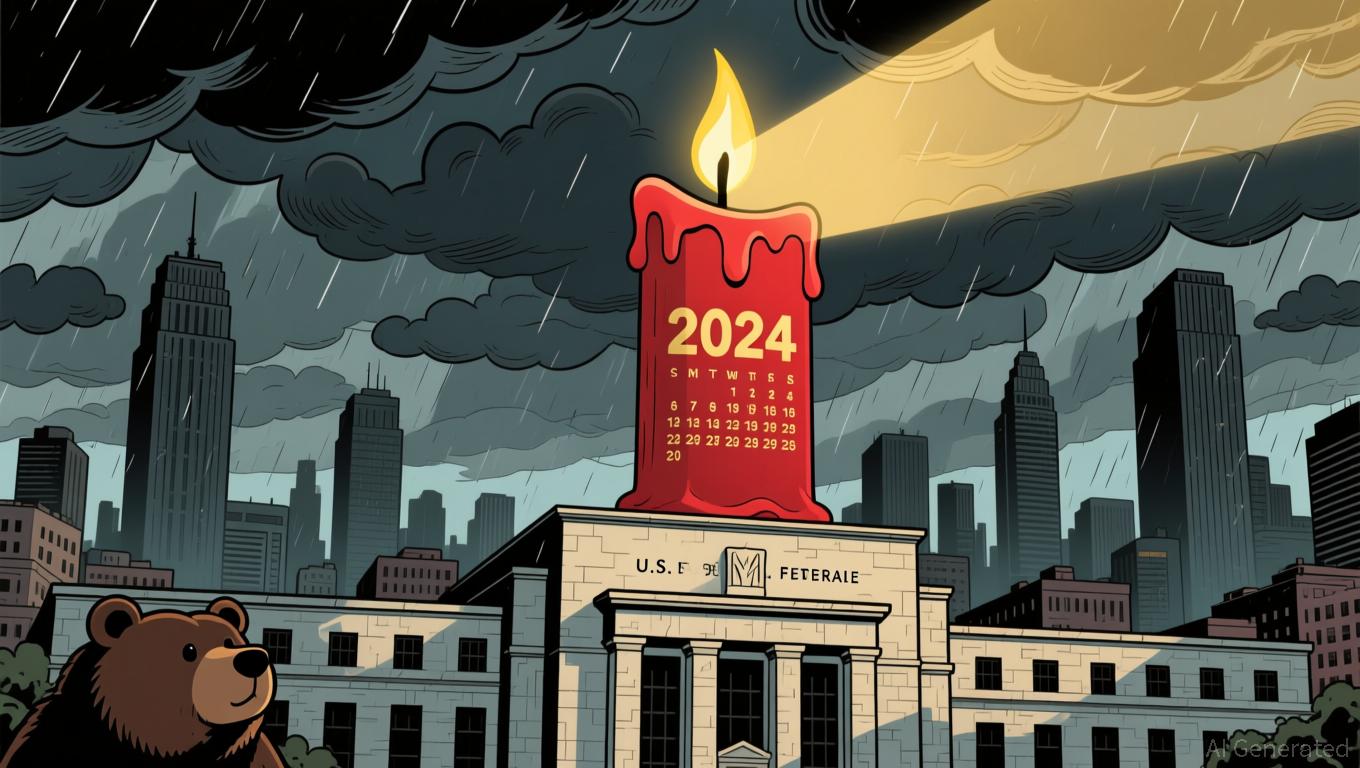Bitcoin Latest Updates: Macroeconomic Factors and Earnings Challenges Drive 44% DeFi Downturn
- Market analysts predict a 44% correction in DeFi and crypto sectors due to macroeconomic risks, Fed policy uncertainty, and weak corporate earnings. - HIVE Digital faces scrutiny over Bitcoin holdings reduction and shareholder dilution, while Hyster-Yale reports Q3 losses amid industry margin pressures. - Data center infrastructure emerges as a growth outlier with $11.1B backlog and $320B 2030 market projection, though labor shortages and permitting delays persist. - Goldman Sachs adjusts energy sector o
Both the cryptocurrency and DeFi markets are experiencing a notable downturn, as experts predict a potential 44% drop for major assets. This pessimistic forecast is attributed to ongoing macroeconomic challenges and disappointing corporate earnings. The negative sentiment aligns with a pivotal week filled with economic reports and central bank decisions, such as U.S. inflation data and updates from the Federal Reserve, which could
Wider market weakness is intensifying the bearish mood, with companies like

Industrial companies are also adding to the negative outlook. Hyster-Yale Inc. (HY), which manufactures material handling equipment,
Despite the broader slump, the data center infrastructure industry remains a rare area of optimism.
The bearish projections for DeFi and the wider markets are closely tied to the interaction between macroeconomic uncertainties and company earnings. With the Federal Reserve’s policy direction still uncertain and new inflation data on the horizon, traders are preparing for increased market swings. For DeFi companies, tighter regulations and ongoing market corrections could intensify downward trends, especially if liquidity becomes even more constrained.
Disclaimer: The content of this article solely reflects the author's opinion and does not represent the platform in any capacity. This article is not intended to serve as a reference for making investment decisions.
You may also like
ZEC Drops 10.26% Over 24 Hours as Market Fluctuates
- ZEC dropped 10.26% in 24 hours to $495.01, but rose 778.18% annually. - Short-term decline reflects market volatility, with investors split between entry points and caution. - Analysts link ZEC's swings to macroeconomic factors and speculative trading, not direct news. - Broader crypto trends and leverage-driven corrections may influence future stability.

Bitcoin Updates: Bitcoin Climbs Even as ETF Outflows Hit Record Highs and Hopes for Fed Rate Cuts Fade
- Bitcoin rebounds as markets price a 46% chance of a December Fed rate cut, down from 93.7% in October. - U.S. spot Bitcoin ETFs saw $523M in single-day outflows, with BlackRock's IBIT leading $2.1B in redemptions. - Technical indicators show a fourth "death cross" and declining liquidity amid unresolved macro risks. - Traders add $5.7M in short positions, reflecting broader caution as crypto faces regulatory and volatility challenges.

Ethereum News Update: With Major Ethereum Holders Pulling Back and Tron Showing Little Movement, LivLive and BlockchainFX Are Driving the Crypto Market's Revival
- LivLive’s presale surpassed $2.1M, driven by real-world engagement and AR missions, offering 100%-200% token bonuses to early investors. - BlockchainFX secured $11M in presale funding with an international trading license, using a deflationary model to boost long-term value. - Ethereum whales retreated, while Tron’s TVL dropped to $4.58B amid stagnation and regulatory scrutiny. - Crypto’s shift favors projects with utility and compliance, with LivLive and BlockchainFX leading the resurgence amid broader

Zcash Halving and Its Effects on the Crypto Market
- Zcash's November 2025 halving reduces block rewards by 50%, tightening supply and reinforcing its deflationary model akin to Bitcoin . - ZIP 1015's lockbox mechanism removes ~$337,000 daily liquidity, while ZEC's price surged 1,172% YTD amid privacy-driven demand and institutional adoption. - Institutional investments like Grayscale Zcash Trust and 5% supply acquisitions highlight growing acceptance as a strategic reserve asset. - Privacy-focused adoption (28% shielded transactions) and negative Bitcoin